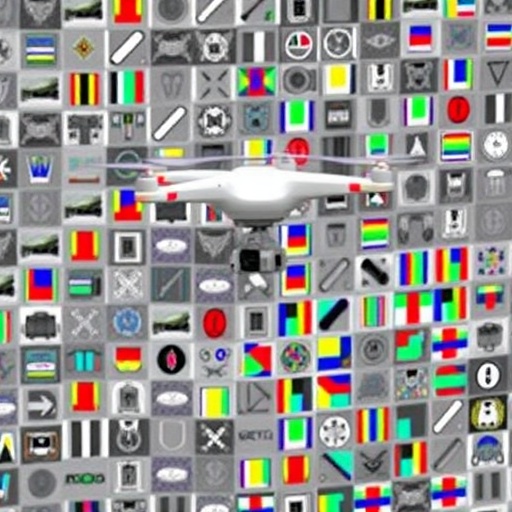In recent years, the field of remote sensing object detection has seen remarkable growth, driven largely by advancements in artificial intelligence and machine learning. This explosive expansion is profoundly transforming the application landscape of Unmanned Aerial Vehicles (UAVs), which are now being utilized for a multitude of practical applications ranging from disaster response and urban planning to environmental monitoring. However, despite the momentum in this field, there are significant challenges that need to be overcome to optimize the performance of detection models.
One of the primary challenges in remote sensing object detection lies in balancing the need for high accuracy with the demand for fast, efficient processing—particularly on devices that may have limited computational power. UAVs operate under conditions where the objects they must detect can vary significantly in size, orientation, and lighting, which adds further complexity to the detection process. Designers and researchers are tasked with creating innovative deep learning models that ensure robust performance without necessitating extensive computational resources.
To address these challenges head-on, a dedicated research team from Osaka Metropolitan University, comprising graduate student Hoang Viet Anh Le and Associate Professor Tran Thi Hong alongside their collaborative team, recently unveiled a groundbreaking detection framework uniquely suited for UAV applications. Central to their efforts is the development of the Partial Reparameterization Convolution Block, abbreviated as PRepConvBlock. This innovative approach significantly streamlines the complexity associated with convolution operations while preserving the integrity of feature extraction.
The advantage of PRepConvBlock lies in its capability to enable the use of larger kernels, which in turn facilitates longer-range feature interactions and enhances the model’s receptive fields. By rethinking the architecture of their detection framework, the researchers laid the groundwork for a more capable model that is less encumbered by the computational limitations traditionally associated with remote sensing applications.
Taking their innovations a step further, the team introduced the Shallow Bi-directional Feature Pyramid Network, or SB-FPN. This advanced addition to their framework effectively amalgamates information from both shallow and deeper feature scales, allowing for enhanced visual representation and significantly improving detection accuracy in UAV imagery.
The culmination of these sophisticated developments leads to the architecture known as SORA-DET, which stands for Shallow-level Optimized Reparameterization Architecture Detector. Specifically engineered for UAV remote sensing tasks, SORA-DET incorporates up to four detection heads, a feature that allows it to achieve remarkable accuracy levels while simultaneously maintaining processing efficiency. Early benchmarks reveal that SORA-DET achieved an impressive 39.3% mean Average Precision at 50 (mAP50) on the challenging VisDrone2019 dataset, while excelling further with an 84.0% mAP50 score on the SeaDroneSeeV2 validation set. These results establish SORA-DET’s superiority over numerous other large-scale models, all while its architecture remains significantly smaller and faster.
One particularly striking aspect of the SORA-DET model is its remarkable reduction in parameter count when compared to conventional one-stage detector models, requiring nearly 88.1% fewer parameters. This drastic reduction not only contributes to a leaner design but also plays a critical role in enabling a rapid inference speed of as fast as 5.4 milliseconds. The compact structure combined with high detection performance lays a solid foundation for real-time adaptability in various UAV-based applications.
The implications of these findings are far-reaching, showcasing SORA-DET as a promising solution for enhancing the capabilities of UAVs in remote sensing. By facilitating accurate and fast object detection on lightweight devices, the research paves the way for transformative applications, particularly in domains like disaster management and search-and-rescue operations. The potential impact of real-time, high-accuracy object detection cannot be overstated, especially in scenarios where timely intervention is crucial.
Importantly, this research builds on the existing body of knowledge within the field, contributing valuable insights into the development of lightweight and effective computation models. The advances present a clearer pathway for future research, illustrating how innovative modeling can address the inherent challenges faced in remote sensing with UAVs.
In summary, the work by Osaka Metropolitan University reflects a significant leap forward in UAV applications for remote sensing. By melding advanced architectural frameworks like PRepConvBlock and SB-FPN, alongside the introduction of SORA-DET, this innovative research illustrates the potential of artificial intelligence to push the boundaries of what is possible in real-world applications. The synergy of compact design, remarkable performance, and the ability to operate in real-time situates SORA-DET as a noteworthy contribution to the realm of UAV-based object detection.
As this line of research continues to unfold, it will undoubtedly inspire further innovations that will enhance the capabilities of UAVs in a multitude of sectors, reinforcing the role of technology as a vital partner in addressing contemporary challenges. Within a broader context, these developments will likely serve as a catalyst for more expansive and ambitious applications of UAV technology, fundamentally reshaping how we perceive and interact with our environment.
Given this trajectory of progress, it becomes evident that the future of UAV-based remote sensing is bright, driven by continuous improvement and innovative breakthroughs that not only meet the demands of today but anticipate the needs of tomorrow. As technological advancements continue to refine and redefine our understanding of remote sensing capabilities, there is no telling how far-reaching the implications of this research will be.
Subject of Research:
Remote sensing object detection using UAVs.
Article Title:
Partial feature reparameterization and shallow-level interaction for remote sensing object detection.
News Publication Date:
5-Aug-2025.
Web References:
Scientific Reports DOI.
References:
Not applicable.
Image Credits:
Credit: Osaka Metropolitan University.
Keywords
UAV, remote sensing, object detection, artificial intelligence, deep learning, SORA-DET, efficient processing, feature pyramid networks, disaster management.




